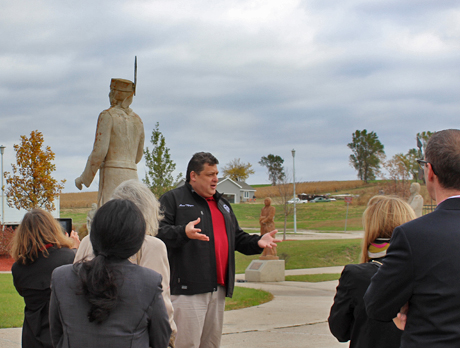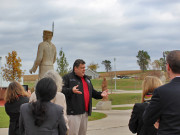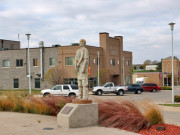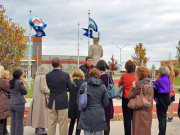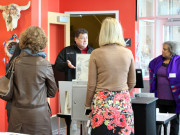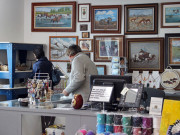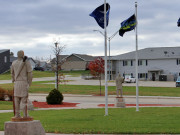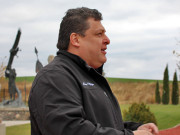The Winnebago Tribe of Nebraska recently celebrated the grand opening of Educare Winnebago, a new early education center for the tribe’s infants, toddlers and preschoolers. As the first Educare school in a Native American community, it combines best practices in education with the culture, language and traditions of the Winnebago people.
It is a truly remarkable project, and I was so pleased to join people from as far away as Oklahoma, Illinois and Washington, D.C., to celebrate the grand opening. Before the ceremony, a group of visitors — project partners and educators — was given a tour of Ho-Chunk Village, the tribe’s commercial and residential development. The village marked its 10th anniversary last year.
Lance Morgan, president and CEO of Ho-Chunk Inc., the economic development arm of the Winnebago Tribe, greeted us and told us the story of how Ho-Chunk Village was created. Lance also serves on the advisory board for Travois New Markets, and it was especially exciting to hear about the development directly from the person who launched Ho-Chunk Inc. and led the creation of Ho-Chunk Village.
Lance explained that for many years, the tribe struggled with poverty, high unemployment (more than 60 percent) and a lack of affordable housing. Ho-Chunk Inc., created by the tribe in 1994, was tasked with diversifying the tribe’s businesses to build self-sufficiency. It started with one employee (Lance) and has grown to more than 1,000 employees and 30 subsidiary companies.
“We’ve attacked poverty and created opportunity at every level,” Lance said.
In 2003, Ho-Chunk Inc. purchased a 40-acre tract of land to develop a new community to create more jobs and develop housing.
On the tour, we saw the impressive results of this effort. We first stopped at the Winnebago Clan Statue Garden, which is a gathering place in the center of the development. There are 12 statues, each representing a clan in the tribe. I enjoyed reading the signage and learned that clan membership is determined through the father’s line and that each clan has a role in the tribe.
Next, we looked around and saw the commercial buildings and retail spaces. We had an opportunity to stop in the Woodland Trails shop, which sells original artwork and crafts by Native artists. Everything I saw was beautiful, and I would’ve loved to stay for hours to look at everything more carefully. Allnative is another retail store in the development that also sells products online at allnative.com.
We saw an impressive mix of housing — single-family homes, elder housing, multifamily units and rental housing — that didn’t exist a few years ago. The tribe and Ho-Chunk Inc. created a down payment assistance program that has helped tribal members buy their own homes and build wealth. We also saw green energy — solar panels and wind turbines — powering the community.
With this wonderful development and the combined hard work of the tribe, Ho-Chunk Inc. and many others, Lance said unemployment has dropped dramatically and many opportunities now exist.
The Winnebago Tribe tackled improving educational opportunities for its youngest tribal members most recently. After more hard work and the combined efforts of so many people, the Winnebago Tribe had much more to celebrate with the opening of Educare Winnebago.
After the village tour concluded, our group headed to the school for the grand opening celebration. I was truly inspired to see and hear the results of the Winnebago Tribe’s years of hard work, and I look forward to seeing all that they accomplish next!


